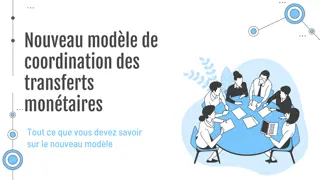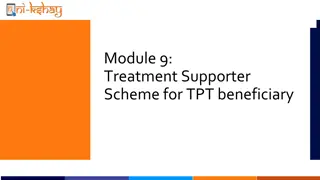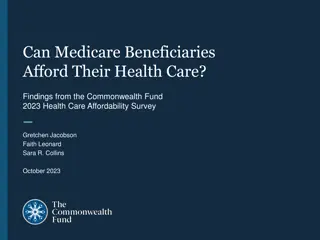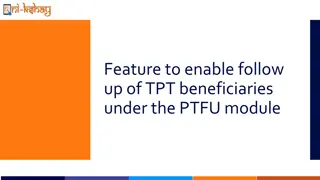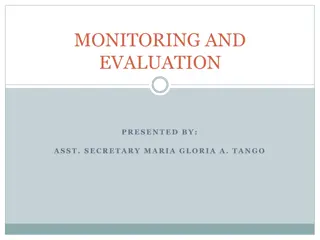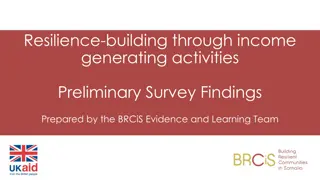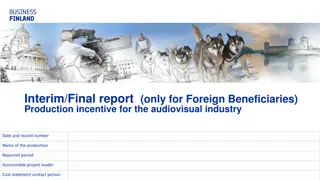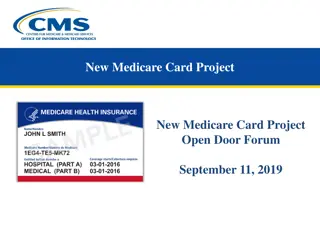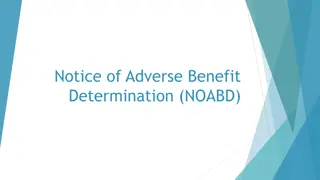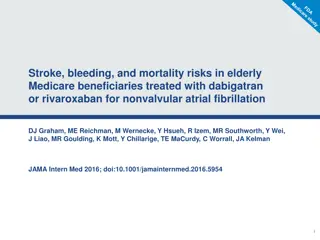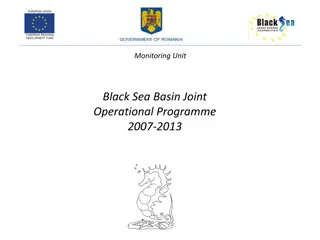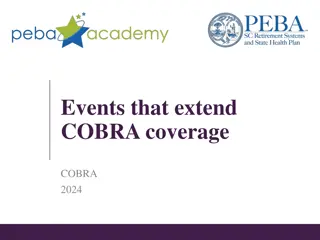
Beneficiary Options in Retirement Plans
Learn about different types of beneficiaries for retirement plans such as SCRS, PORS, and State ORP. Discover the importance of naming beneficiaries, eligibility requirements, and how to designate them effectively to ensure your assets are distributed according to your wishes.
Uploaded on | 1 Views
Download Presentation

Please find below an Image/Link to download the presentation.
The content on the website is provided AS IS for your information and personal use only. It may not be sold, licensed, or shared on other websites without obtaining consent from the author. If you encounter any issues during the download, it is possible that the publisher has removed the file from their server.
You are allowed to download the files provided on this website for personal or commercial use, subject to the condition that they are used lawfully. All files are the property of their respective owners.
The content on the website is provided AS IS for your information and personal use only. It may not be sold, licensed, or shared on other websites without obtaining consent from the author.
E N D
Presentation Transcript
Beneficiaries Retirement Orientation and Education Fiscal year 2025
Intended audience This presentation is focused on the eligibility requirements and plan provisions for Class Three members. Class Three members are those whose earned service began on or after July 1, 2012. Class Two members, those whose earned service began before July 1, 2012, are encouraged to review the summary flyers for Class Two on our Navigating Your Benefits webpage and retirement publications at peba.sc.gov/publications for more information. 2
Types of beneficiaries for SCRS, PORS benefits Upon your death, primary beneficiary may receive either: Refund of contributions plus interest; or Lifetime monthly benefit payments, if eligible. Contingent beneficiaries1 receive survivor benefits if: You and primary beneficiary die at the same time; or Primary beneficiary dies before you, and you do not name another primary beneficiary before death. All primary beneficiaries must be deceased at the time of your death for a contingent beneficiary to receive a benefit. Incidental death benefit beneficiary may receive a payment equal to your current annual earnable compensation if you die in service. 1Contingent beneficiary cannot be the same as primary. 3
Beneficiaries for State ORP Must name primary and contingent beneficiaries for your retirement account directly with your selected service provider. Upon your death, your beneficiary may be entitled to receive the cash value of your account but must file a claim with your service provider. Must name an incidental death beneficiary with PEBA, because your beneficiary might qualify for the active member incidental death benefit payment upon your death. 4
How to name your beneficiaries Easiest way to name beneficiaries with PEBA is online using Member Access. Refer to the Designating Active Member Beneficiaries flyer. To designate a trust as your beneficiary, you must complete Form 1103. You can also complete the appropriate form, but forms require a notary signature and additional processing time: Active Member Beneficiary Form (Form 1102). Beneficiary/Trustee Designation Form (Form 1103); trust must already exist. State ORP Active Incidental Death Benefit Beneficiary Designation (Form 1106). You can name multiple beneficiaries. Benefits are split equally if multiple beneficiaries are named. 5
When beneficiary defaults to estate Occurs when: PEBA and/or your State ORP service provider does not receive a beneficiary designation online or via a beneficiary form; A section of beneficiary form is left blank or is not completed properly; or All named beneficiaries predecease employee, and you do not name a new beneficiary. Ensure you receive a confirmation letter from PEBA and/or your State ORP service provider listing your beneficiaries. It is good practice to review and update your beneficiary information periodically, especially if you have had an important life event. 6
Disclaimer This presentation does not constitute a comprehensive or binding representation of the employee benefit programs PEBA administers. The terms and conditions of the employee benefit programs PEBA administers are set out in the applicable statutes and plan documents and are subject to change. Benefits administrators and others chosen by your employer to assist you with your participation in these employee benefit programs are not agents or employees of PEBA and are not authorized to bind PEBA or make representations on behalf of PEBA. Please contact PEBA for the most current information. The language used in this presentation does not create any contractual rights or entitlements for any person. 7

